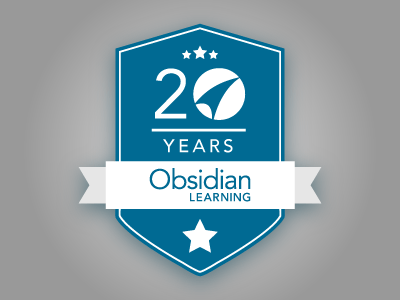Recently I attended the AACE conference on eLearning in Washington, D.C. It was a great event, if far more academically focused and therefore more reserved than some of the flashier, more commercial conferences we attend. On the first morning, we had a keynote address by Marc Prensky of the Global Future Education Foundation & Institute about Problem-Based Learning (PBL).
With great enthusiasm, he extolled the virtues of learning through problem solving, explaining that we should be raising our kids to grapple with the question: How can I make the world better? Rather than just delivering content for later accomplishment, we should allowing our students to accomplish while getting educated.
There was much affirmation from the audience, with nods, murmurs, and righteous note-taking. He gave numerous and powerful examples of Problem-Based Learning in action in the K-12 environment:
- Kids as young as elementary age who are designing playgrounds, conducting environmental reports, and improving neighborhood amenities
- Middle-schoolers who are printing prosthetic hands and finding kids who need them
- High-school kids who are installing IT networks, testing water quality, and restoring historic artifacts
While I was inspired by the good works being done all over, I was brought up short that the idea of this type of learning was being portrayed as revolutionary. This struck me as very like the work I (and most others in the field of corporate learning!) am doing on a daily basis. We regularly set up learning experiences that revolve around a real-world problem to be solved. It is not even a hard sell to most corporate clients that the learning should be structured in this way. Whether in traditional class or an online learning element, participants are more engaged and transfer of learning is higher if you can see the relevance of the information by real-world application.
Even the most technical of gurus/Subject Matter Experts can usually see the value in developing realistic scenarios or using existing case studies to give participants a chance to apply what they are mastering. After all, out here in the corporate world, there really isn’t such a thing a learning just for learning’s sake. You are always trying to solve some existing dilemma through your research and learning.
Using a Problem-Based Learning Model, where participants work in groups in a self-directed way to solve real-world problems, is certainly supported by the Blended Learning model. We know that the best learning needs to be a blend of independent and interactive work. Participants can really benefit from work-based problem-solving especially with the support of a mentor/expert. For many of our clients, this is definitely part of their broader curriculum.
I guess I just assumed that our academic counterparts were already following suit. I know that there increasing integration of subjects and increasing emphasis on critical thinking and problem solving even in K-5 curriculum. What are you seeing in your area schools in terms of Problem-Based Learning? Are our kids being positioned to make the world a better place? Is there a gap between school and corporate learning that we need to bridge?







